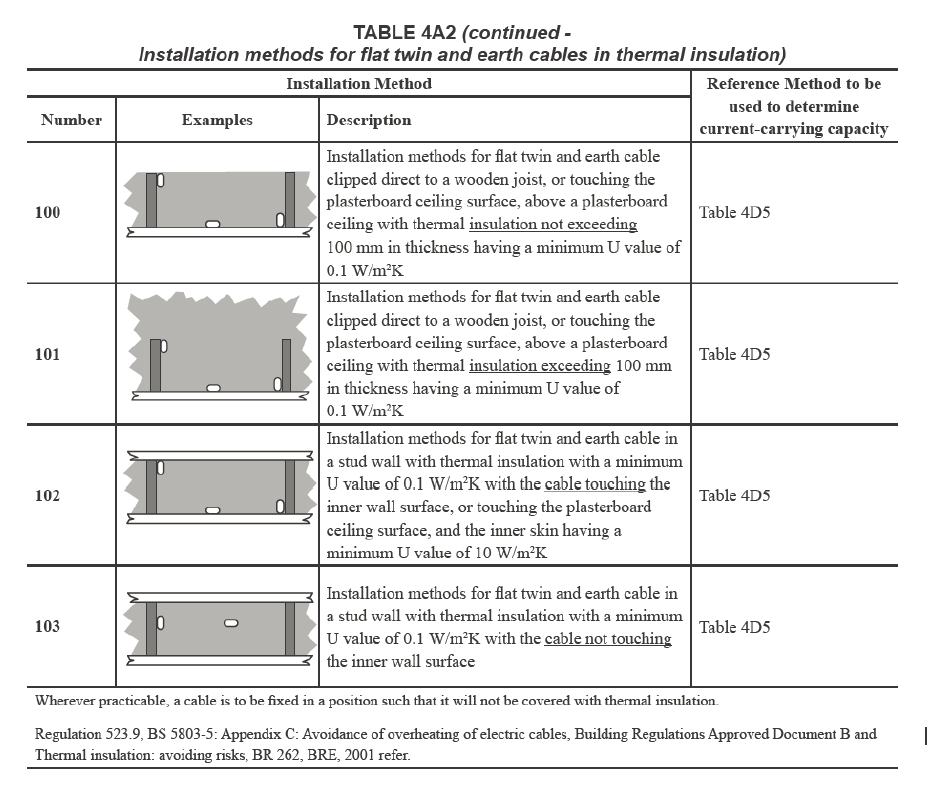Talking Technical – Reference Method 101 and similar
Recording the correct reference method is imperative for correctly identifying characteristics of the circuits wired.

"We are proposing that we take a common-sense logical view to assessing and coding cables that are wired in reference method 101 or similar. "
Recording the correct reference method is imperative for correctly identifying characteristics of the circuits wired. As you all know, reference method 101 is very common, and as per table 4D5 has a big impact on cables and the current that they can carry. This method has been around for years, but as we become more economical and strive for energy efficiency this reference method has become more prominent.
Please note that it is only actually reference method 101 if the insulation U value is 0.1W/m2k or less, as the lower the value the greater the insulation properties of the material, and the insulation thickness is 100mm or greater.
Part L of the building regulations covers energy efficiency, specifically for when carrying out upgrades in an existing dwelling, Part L1B comes into play. So, when carry out an EICR on a property, especially one owned by a housing association, it is likely that insulation levels will have been upgraded under L1B.
How do we code this and how can we take a logical, safe and compliant view? Let’s take a ring main as an example:
2.5mm Twin and CPC cable wired method 101 has a CCC of 17amps as per table 4D5, this would therefore on the face of it be an overrated device as per regulation 433.1.204 and 433.1.1 so recorded as a C2.
But, is this potentially dangerous? Does this cause issues within dwellings?
The short answer is no. It’s all to do with the maximum demand of the circuit covered in the insulation, as where it cannot exceed the tabulated current-carrying capacity of the cable there will not generally be any thermal issues.
When we discover this reference method or similar, we need to assess the load. For instance, a shower or cooker have large loads, but the circuit is not at maximum load for long periods of time and a small overload of a short duration does not typically cause overload issues.
Usage on a circuit is generally very efficient, for example, LED lights, LED TV’s, PC’s, laptops all use minimal power.
We are proposing that we take a common-sense logical view to assessing and coding cables that are wired in reference method 101 or similar.
If you discover these reference methods being utilised, then we need to investigate as much as possible. So, we are proposing the following steps:
- Thoroughly assess the cables visually and if safe to do so move loft insulation (appropriate PPE and precautions entering the loft need to be adhered too, see relevant RAMS) inspect the cables for any signs of overheating i.e. insulation cracking, discolouration, brittleness etc.
- Full test on the circuit and insulation resistance to be carried out at 500V.
- Extend the visual inspection of accessories from the minimum of 20% to a level that satisfies that no localised signs of overheating or loose connections have or may occur in the future from expansion and contraction of the cable caused by potential overheating within the circuit.
If once you have carried out steps 1-3 and are happy that no signs of thermal issues are present and that the loading is acceptable, then add the observation below and record a C3.
Circuit number (insert Cct number) reference method could potentially cause overloading and thermal issues to the circuit in its current configuration, however at the time of test and after additional checks have been made no signs of this is currently present. C3
If, however, you see any signs of thermal damage, deterioration or discolouration then record the below observation and code as a C2 – carrying out remedial action to resolve (downrating of circuit or rewiring of circuit etc).
Circuit number (insert Cct number) reference method is showing signs of thermal damage to the circuit due to overload and overrated over current protection for the circuit C2.
We will advise the client that a percentage of properties with these reference methods should be checked visually between inspections or have a reduced next inspection period to check for any deterioration or signs of thermal damage to the cables, if any issues are found, we would increase the percentage of inspections in a reduced timeframe.
This document has been compiled after a lot of research, consideration and thought. We have taken advice from NAPIT, NICEIC and Electrical Safety First to be confident in concluding the best coding and the next recommended inspection date. Like anything, your experience and engineering judgement is paramount, and you must make the call onsite on a job by job basis with this document to assist and help you.
If you have any questions about this Talking Technical article, please contact Steve Skillern at ECS Ltd on 01536 650722 or email stevenskillern@ecs-group.co.uk.

